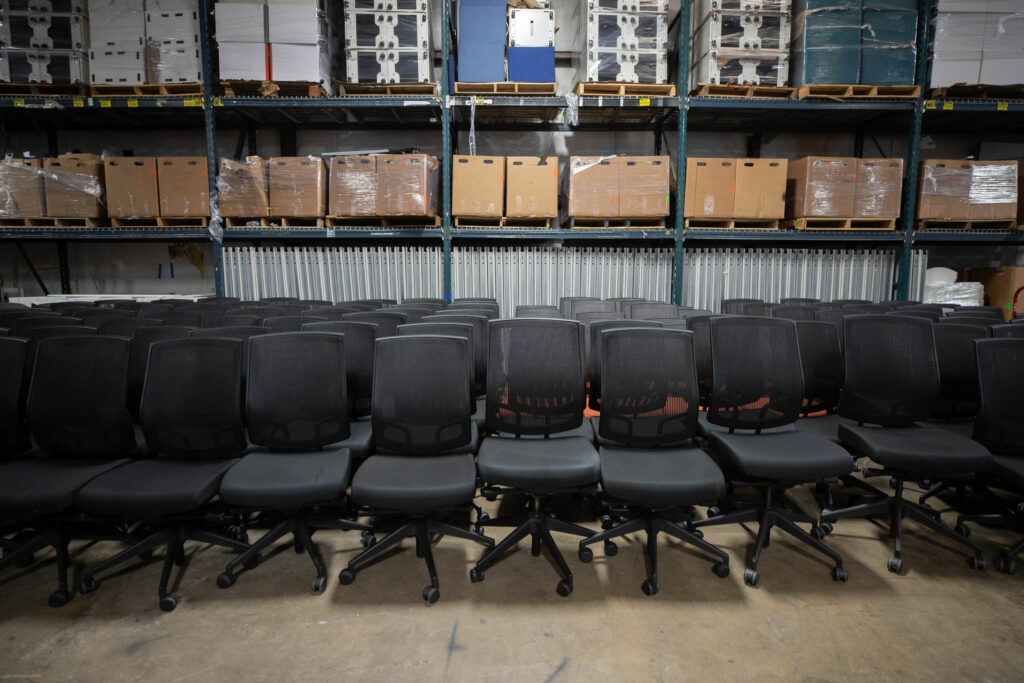What Distinguishes Executive Office Furniture from Standard Office Furniture?
In the realm of office aesthetics and functionality, the choice of furniture plays a pivotal role in setting the tone and defining the workspace's ambiance. Executive office furniture stands out as a class of furnishings that exudes sophistication, functionality, and often a sense of status. This article aims to unravel the distinctions between executive office furniture and standard office furnishings while delving into the modern trends reshaping office furniture design.
Distinguishing Features of Executive Office Furniture:
- Design and Aesthetics: Executive office furniture is characterized by its elegant and upscale design. It often incorporates luxurious materials like high-quality wood, leather, or metal accents, showcasing craftsmanship and attention to detail. The design elements convey a sense of professionalism and sophistication, elevating the ambiance of executive spaces.
- Functionality and Ergonomics: While emphasizing aesthetics, executive furniture doesn't compromise on functionality and ergonomics. Ergonomic chairs with adjustable features, spacious desks with ample storage options, and integrated technology solutions are common features in executive office setups. The furniture is designed to cater to the practical needs of high-level professionals who spend extended hours working.
- Quality and Durability: Executive office furniture is crafted from superior quality materials, ensuring durability and longevity. The emphasis on quality craftsmanship and materials results in furniture that not only looks impressive but also withstands daily wear and tear, maintaining its elegance over time.
- Prestige and Status: The design and materials used in executive furniture often evoke a sense of prestige and status. These furnishings are commonly associated with top-level executives, CEOs, and professionals seeking a sophisticated and prestigious ambiance within their workspace.

Contrasting Characteristics of Standard Office Furniture:
- Utilitarian Design: Standard office furniture typically emphasizes practicality and functionality over intricate design elements. It may incorporate simpler designs and more affordable materials compared to executive furniture.
- Affordability and Mass Production: Standard office furniture is often mass-produced, making it more affordable and accessible to a broader range of businesses. The materials used might include laminate, medium-density fiberboard (MDF), or basic fabrics rather than high-end materials.
- Generic Aesthetics: Standard office furniture tends to have a more generic appearance, lacking the luxurious finishes and attention to detail found in executive furniture. While functional, it may not convey the same level of elegance or prestige.
Modern Trends in Office Furniture Design:
Contemporary office furniture design trends are evolving, blending elements of executive and standard furniture to create versatile and functional workspaces. These trends include:

- Flexible and Collaborative Spaces: Modern furniture office trends focus on creating flexible and collaborative environments. Furniture pieces with modular designs, adaptable configurations, and ergonomic features cater to diverse work styles and encourage collaboration among employees.
- Sustainable Materials: There is a growing emphasis on sustainability in office furniture design. Manufacturers are using eco-friendly materials, recycled elements, and sustainable production practices to reduce the environmental impact of office furnishings.
- Technology Integration: With the increasing reliance on technology, modern office furniture integrates technology seamlessly. This includes desks with built-in charging ports, cable management solutions, and ergonomic designs accommodating various devices.
Conclusion:
Executive office furniture stands apart from standard office furnishings through its sophisticated design, superior quality materials, and attention to detail. While executive furniture reflects status and professionalism, modern trends in office furniture design emphasize functionality, versatility, and sustainability. Understanding the distinctions between executive and standard office furniture assists in creating workspaces that balance elegance with practicality, fostering productivity and reflecting the evolving needs of contemporary workplaces.
Comments
Post a Comment